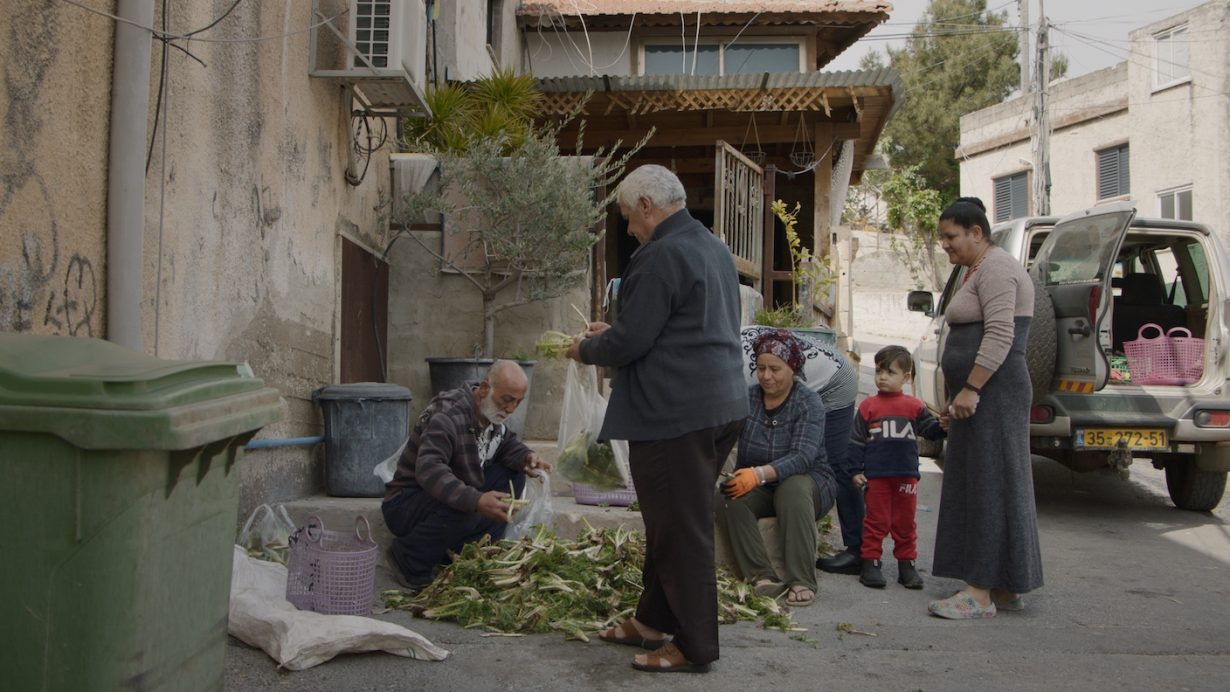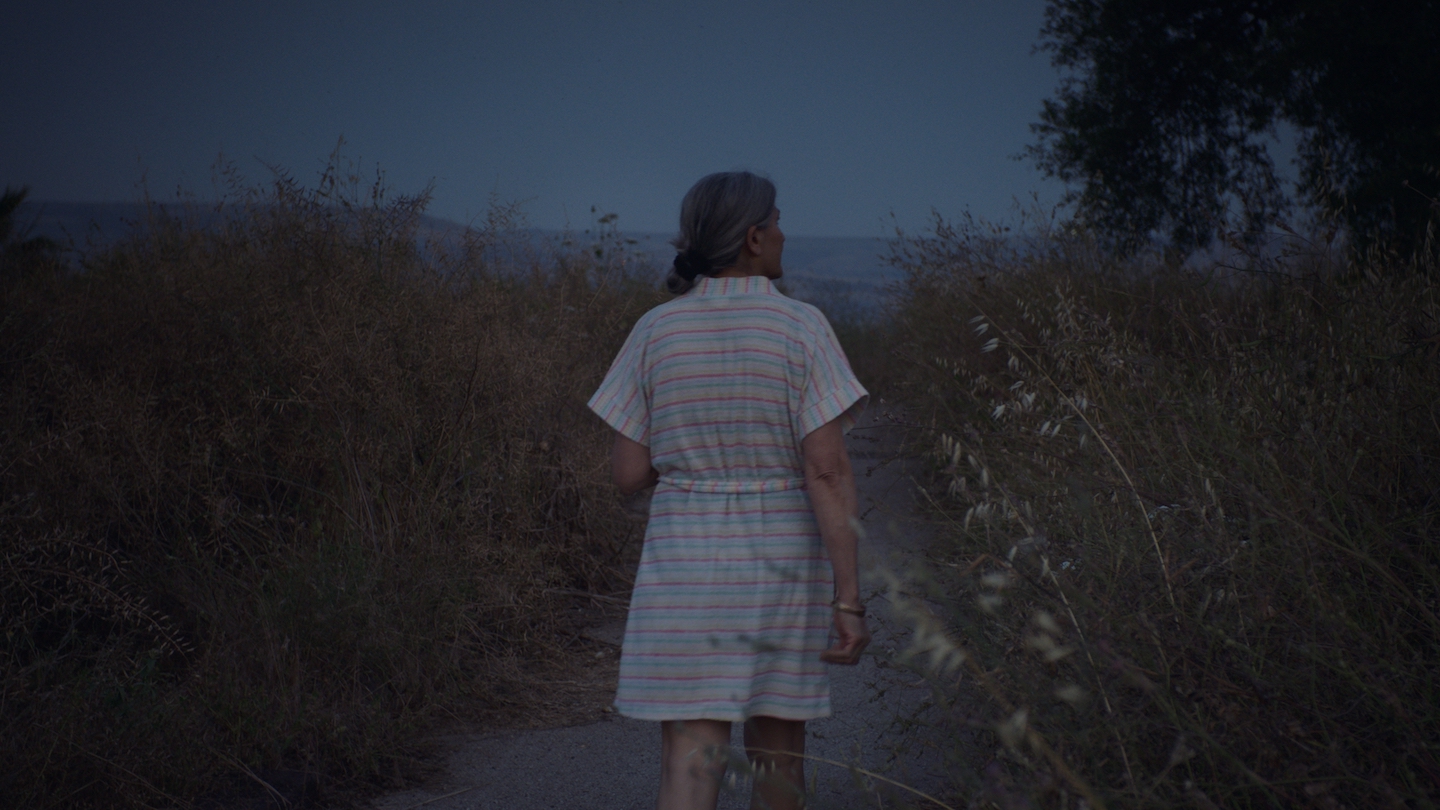Break, Take, Erase, Tally at MoMA PS1, New York juxtaposes ways of living harmoniously alongside the land with structures of modern statehood
Concerned with how politics are enmeshed in ecological preservation, Jumana Manna’s exhibition becomes a setting for the artist to explore the thorny contradictions knotted into modern environmental policies. Situating her work at the intersection of ecology and law, Manna is most effective in her films, which juxtapose ways of living harmoniously alongside the land with structures of modern statehood, entities that in her telling often appear clunky, laborious and ineffectual.
The star of the exhibition is Foragers (2022), a film blended from documentary footage and scripted scenes that builds a portrait of the ongoing struggle between Palestinian foragers and the Israel Nature and Parks Authority over the right to pick wild-growing za’atar and ’akkoub. For decades, the Israeli government has banned foraging these herbs under the pretext of protecting them from overpicking and extinction. In reality, development and construction pose much more of a threat to ’akkoub – a plant that won’t grow in turned-over soil – than the studied cuts of foragers who, for the most part, know how to crop the plants to ensure regrowth. More salient is the fact that foraging only carries cultural significance for the Palestinian population; Israelis simply purchase their za’atar from local farmers. Thus, Manna cleverly underscores how conservation has been retooled as a method for continued cultural suppression. Foraging ’akkoub and za’atar is punishable by prison time and severe fines, yet the Palestinians keep at it.

Quiet shots of Manna’s own parents wandering the lush, springtime valleys, bags and secateurs in hand, turn Foragers into a story of resistance. They persist not only in the practice of foraging, but also in their connection to a land of which they have been dispossessed.
Scripted court scenes make it more explicitly a film about protest, with fiction providing the foragers – both found and cast – a secure venue for rebellion. In front of the camera, the foragers speak their minds. They evade questions and refuse guilt. These scenes are unexpectedly lighthearted and funny, showing off Manna’s deft feel for the absurd; you might think the prosecutors were talking about drug trafficking, rather than a benign green picked by grandmothers and eaten to bolster the immune system. This fiction allows Manna to hone her thesis, shifting the film from mere documentary to a defiant call to action.

Humour also plays a vital role in Manna’s earlier film, Wild Relatives (2018), which follows ICARDA (the International Center for Agricultural
Research in the Dry Areas) as it replicates seed stores once held in Aleppo. After the outbreak of war in Syria, seeds were taken from the global storage facility in Svalbard, Norway, to facilitate the construction of a new seedbank in the Bekaa Valley of Lebanon. Watching the seeds be weighed and vacuum-sealed, handled all the way by rubber-gloved fingers, it is hard not to see a kind of comical futility to the whole routine. The film asks what is being preserved in this physical catalogue of biodiversity.
Removed from the soil, the growing techniques, the cultural contexts and the cuisines that prize such plants, what is left for the seeds to represent? Manna is evasive, providing no clear answers. Her film neither glorifies nor condemns the project, but seems to hint at the opportunity to preserve a culture alongside its seeds.

Across the exhibition, Manna’s work is strongest when it foregrounds her interest in how food systems serve as vectors of culture that can both clash with and transcend the structures of a nation-state. Her sculptures, though, are less successful. In their staging, the stylised ancient meets a limp representation of the modern in what ultimately becomes a slightly-too-obvious condemnation of the industrial. Manna’s objects are themselves beautiful, but arranged in space they lack the nuance of her film critique. In this instance, the cultural specificity of the agricultural practices she highlights cannot justify her reverence for them, which at times reads as an over-innocent idealisation of the bucolic, the rural and the preindustrial.
Where Manna’s work shines is in her ability to hold the complex and the contradictory. The open-ended questions of Wild Relatives and the precise critical incision of fiction in Foragers transform her films into living, expandable documents. Presenting alternate plotlines to our accepted understanding of agricultural modernity, Manna’s films remain her most compelling countermove against the tendency for dominant narratives to ossify into law.
Break, Take, Erase, Tally at MOMA PS1, New York, through 17 April
